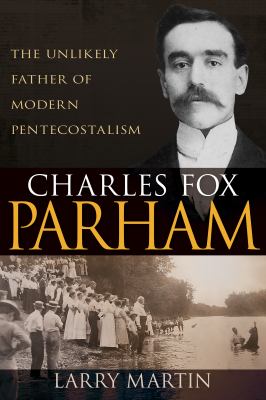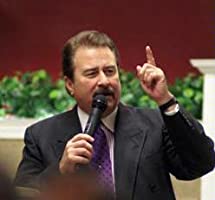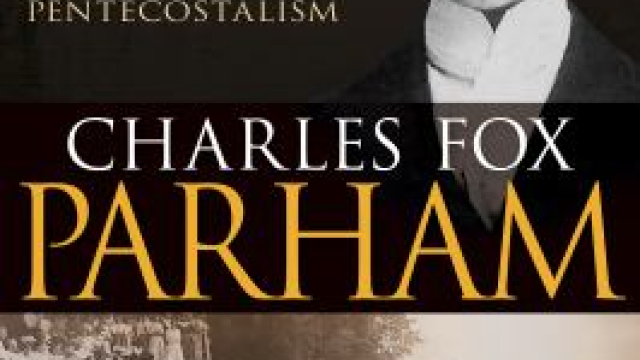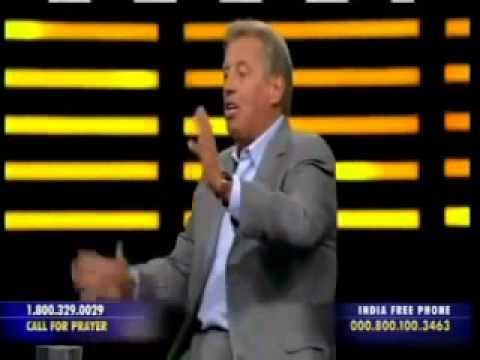Click to join the conversation with over 500,000 Pentecostal believers and scholars
Click to get our FREE MOBILE APP and stay connected
| PentecostalTheology.com



A review essay of Larry Martin’s Charles Fox Parham
“Let the iniquity of his fathers be remembered before the LORD, and let not the sin of his mother be blotted out” (Psalm 109:14 NKJV).
 Larry Martin, Charles Fox Parham: The Unlikely Father of Modern Pentecostalism (New Kensington, PA: Whitaker House, 2022), 224 pages, ISBN 9781641238014.
Larry Martin, Charles Fox Parham: The Unlikely Father of Modern Pentecostalism (New Kensington, PA: Whitaker House, 2022), 224 pages, ISBN 9781641238014.
Who are we, and where do we come from? My Classical Pentecostal relatives in the second half of the twentieth century weren’t concerned with history. Rather than looking back, they saw themselves standing on the edge of the future. They concluded that “fire-baptized, Holy Ghost” intercessions were a demonstration of the “latter rain” (Joel 2:23; Hosea 6:3). Through vigorous worship, tongues-speech, and healing prayers, they were part of the climax of the Christian mission.
Although they wouldn’t have used the term, my grandparents, uncles, and cousins were avowed restorationists,1 finalizing the last days revival. They believed Pentecostalism was providentially birthed in the opening of the twentieth century. With the exceptions of Luther, Wesley, and Finney, all that took place prior was a byproduct of the corruptible “dark ages.”
This perspective wasn’t exclusive to my family. It seems that many Pentecostals “prefer a romantic, almost mythical view of the founding of Pentecostalism.”2 Randall J. Stephens indicates Spirit-baptized authors were “largely ahistorical,” portraying the “Pentecostal revival as dropping from heaven like a sacred meteor.”3 Grant Wacker quoted an early figure who said that movement’s “source is from the skies.”4
Growing up, the folklore from the Topeka Outpouring (1901) and the Azusa Street Revival (1906-1909) was recounted in pulpits and scribbled in hagiographic texts. However, the actual details of these defining events were fuzzy. I was told there were men who fasted, prayed, and inaugurated the glorious latter rain, but I seldom heard more than a cursory mention of their names. One of the white-haired evangelists related the following in the 1980s:
That era was holy—without all the foolishness and stupidity we see today. That revival was carried forward without the hoopla, famous names, or fleshly advertising sheets. For us, it was like the glory of the Lord enveloped us. We were tasting the nectar of heaven.
I have no doubt this preacher’s remarks came from an overwhelming encounter. Revivals are euphoric. I believe in the existence of Spirit-led outpourings.5 Yet, overwhelming altar experiences can be undermined when we lose our footing. Without a definable heritage, it’s difficult to stand.
The ahistorical mentality of Classical Pentecostalism invites stakeholders to turn a blind eye to unsavory elements. No one enjoys grappling with racism, egotism, and aberrant doctrines. Delving into British-Israelism,6 crazed apocalyptism,7 and sensationalistic self-promotions8 doesn’t put a smile on anyone’s faces. Some of the past is fun to explore, but much of it is better left in the shadows. Modern Pentecostals appreciate the innovations, fervor, and supernaturalism of John Alexander Dowie (1847-1907), Maria Woodworth Etter (1844-1924), Frank Sandford (1862-1948), John G. Lake (1870-1935), and Charles Parham (1873-1929)9 but many are embarrassed by their unconventional ideas and practices.
As the Spirit-filled tribe forms origin stories, we give ourselves freedom to pick and choose. All historians are editors, but we must be careful that we don’t take too many liberties. A movement without legitimate identity markers will always be transformed into something else eventually. Is the Spirit-filled movement merely another form of Fundamentalism,10 Evangelicalism,11 Seeker-sensitivity,12 or politically-infused Christian nationalism.13 This is important to grapple with.
People forget Pentecostalism was originally an offshoot of radical holiness—cantankerous sectarians with an other-worldly ethos that “ran counter to the practices of society.” Their bizarre supernaturalism, cataclysmic warnings, and radical mission strategies brought “criticism and contempt.”14 I know dozens of Pentecostals embarrassed by previous generations. They would prefer to sweep the raucous elements under the carpet, canceling the older worldview and impulses. They have set out to deconstruct Pentecostalism, making it better intersect with twenty-first century sensibilities. Is this a reasonable endeavor or not? Who gets to decide?
Regardless of other concerns, Pentecostals still have to grapple with their originating identities. The movement didn’t just fall out of the sky in 1901, like a meteor. There are continuities and discontinuities shaping our trajectories. The Spirit-baptized were and are a product of a particular ethos. Shall we deny the people, places and perspectives that gestated the movement?
Dr. Larry Martin’s new book Charles Fox Parham: The Unlikely Father of Modern Pentecostalism is an indispensable remedy for ecclesiastical amnesia. He delves into the turbulent story of the originator of Pentecostalism. The author makes a compelling case for Parham’s ascendancy. Many will not relish the assertion that Parham is the father of the movement. Martin writes,
In the past 50 years, it has become popular to favor William J. Seymour as the founder of Pentecostalism … If the facts of history allowed it and given a choice, a vast majority will pick Seymour over Parham. Seymour was the kind of man Parham is not: Seymour was humble and morally pure. In every way known to us, it seems he was a better man … He was a great preacher, a great Christian, and a great man … None of that, however, can change the facts of history, which demonstrates that Parham founded modern Pentecostalism.15

Larry Martin
As Martin’s book builds, he takes readers through the highs and lows of Charles Fox Parham’s ministry, documenting his subtleties. The contours of this ex-Methodist’s doctrines and missional achievements fill hundreds of footnoted pages. Martin acknowledges Parham’s giftings and unremitting drive but doesn’t shy away from his egotism,16 doctrinal errors,17 racism,18 and moral lapses. In fact, the “shadows” are where Martin demonstrates his nimble skill as a theologian and historian. I commend him for the difficult task he has accomplished. With clear, cogent writing, Martin tells the story of this flawed Pentecostal figure, and what his ministry means for us today. Readers must pay attention to what he has uncovered. Martin’s book is crucial for re-centering our movement’s origins, distinctives, and trajectories.
Pentecostalism is undergoing an identity crisis. In an eagerness to grow and appeal to suburban housewives, Spirit-filled leaders are smoothing out the rough edges. Some are embarrassed by their forefathers’ rhetoric. Since these gatekeepers downplay gifts of the Spirit in Sunday morning worship services,19 it’s no wonder “Pentecostal” adherents rarely speak in tongues anymore. 20 The revivalistic fervor that characterized the movement a century ago has certainly waned.
Some are rightfully asking, “What does it mean to be a Spirit-filled believer?” One longtime friend said to me, “These days we’re just like the Baptist church down the street, except we believe in tongues. Well, at least we do on paper.”
Things are certainly in a flux. Pentecostals probably will not recognize where we’re going if we don’t remember where we’ve been. Our flawed fathers have something to teach us about sin, brokenness, and the meaning of forgiveness. I think Larry Martin’s Charles Fox Parham: The Unlikely Father of Modern Pentecostalism is indispensable. It can help us find a way to reconcile and redeem the past.
The iniquities of the fathers must be remembered. The spiritual sons and daughters are inexplicably anchored to the forgotten tales.
Reviewed by J. D. King
Notes
1 Edith Blumhofer suggests restorationism is “the expression of yearning to recapture in the last moments of time, the pristine purity of a long-gone era . . . the end times restoration of the apostolic church.” Edith Blumhofer, Restoring the Faith: The Assemblies of God, Pentecostalism and American Culture (Urbana and Chicago: University of Illinois Press, 1993), 3.
2 Larry Martin, Charles Fox Parham: The Unlikely Father of Modern Pentecostalism (New Kensington, PA: Whitaker House, 2022), 18. Two titles from the early years substantiate this outlook: The Apostolic Faith Restored (1916) and Suddenly From Heaven: A History of the Assemblies of God (1961).
3 Randall J. Stephens, “Assessing the Roots of Pentecostalism: A Historiographic Essay,” The American Religious Experience at West Virginia University. http://are.as.wvu.edu/pentroot.htm (accessed July 20, 2022).
4 Grant Wacker, Heaven Below 142.
5 I was a leader and participant in the Smithton Outpouring (1996-2000), a revival that sparked in a rural Missouri town of 532 people. Over a quarter of a million people came through the doors of that church. See Ron McGatlin, I Saw The Smithton Outpouring (Mt. Airy, NC: Basileia, 2002). https://openheaven.com/wp-content/uploads/2016/09/ISawTheSmithtonOutpouring.pdf
6 British-Israelism is a quasi-racist view “that maintained that the Anglo-Saxon people were the ten lost tribes of Israel.” Edith Blumhofer, Assemblies of God: A Chapter in the Story of American Pentecostalism Volume 1 – To 1941 (Springfield, Missouri: Gospel Publishing House. 1989), 75. Anglo-Israelism was embraced by Frank W. Sandford, John Alexander Dowie, and Charles Parham. It was also accepted, to some degree, by George Jeffreys, F.F. Bosworth, and John G. Lake.
7 Charles F. Parham once wrote, “I have met eight or ten Elijahs, all the major prophets and some minor ones, Adam, God, David, at least fifty claiming to be Jesus, about thirty of the two witnesses (both male and female), all twelve apostles, the fifth angel, three who were the devil, eight who were the virgin Mary.” Charles Parham, The Apostolic Faith (September 12, 1912), 12.
8 John G. Lake “was feisty, pigheaded, and dramatic. He encountered problems in his relationships with fellow missionaries. He was said to boast . . . He was prone to tell tales, particularly accounts that exaggerated his personal accomplishments.” Kemp Pendleton Burpeau, God’s Showman: A Historical Study of John G. Lake and South African/American Pentecostalism (Olso, Norway: Refleks Publishing, 2004), ix-x.
9 For more on these historic figures, see J.D. King, Regeneration: A Complete History of Healing in the Christian Church, 3 volumes (Lee’s Summit, Missouri: Christos, 2017).
10 Assemblies of God General Superintendent David McDowell said, “Praise God that I am a Fundamentalist, and that I am a Pentecostal Fundamentalist”’ McDowell quoted in Stanley Frodsham, “Letter to readers,” Pentecostal Evangel (April 5, 1924),15. He went on to use the term, “Fundamentalists Plus.”
11 Daniel D. Isgrigg, “The Pentecostal Evangelical Church: The Theological Self-Identity of the Assemblies of God as Evangelical ‘Plus’”, A paper presented at the 46th Annual Meeting of the Society for Pentecostal Studies (St. Louis, MO: Mar 9-11, 2017).
12 Daniel Tomberlin, “What is an Undeconstructed Pentecostal?” DanielTomberlin.net (November 18, 2019). https://www.danieltomberlin.net/what-is-an-unreconstructed-pentecostal/ (accessed July 19, 2022).
13 John Burnett, “Christian nationalism is still thriving — and is a force for returning Trump to power,” NPR (January 23, 2022). https://www.npr.org/2022/01/14/1073215412/christian-nationalism-donald-trump (accessed July 20, 2022).
14 Vinson Synan, The Holiness-Pentecostal Tradition: Charismatic Movements in the Twentieth Century (Grand Rapids, Michigan: Eerdmans Publishing), 1997), 192.
15 Larry Martin, Charles Fox Parham: The Unlikely Father of Modern Pentecostalism (New Kensington, PA: Whitaker House, 2022), 18, 19, 20.
16 “Parham showed a lack of spiritual and emotional maturity, unable to rise above his churlish attitude to rival leadership and his culturally ingrained racism.” James Robinson, Divine Healing: The Years of Expansion, 1906–1930: Theological Variation in the Transatlantic World (Eugene, Oregon: Wipf and Stock Publishers, 2014), 27.
17 Allan Anderson writes that Parham, “entertained notions about the “antichrist” as the reincarnation of Judas Iscariot, did not believe in the immortality of the soul, and held to the doctrine of the annihilation of the wicked. He had strange ideas about what constituted the “Body as [the] Bride” of Christ and the meaning of “redemption.” In fact, Parham had an all-around “unorthodox” theology, certainly by evangelical standards!” Alan Anderson, “The Dubious Legacy of Charles Parham: Racism and Cultural Insensitivities among Pentecostals,” Pneuma 27:1 (Spring 2005), 52.
18 Allan Anderson points out that by 1902, “Parham’s British-Israelism, proclaiming the spiritual and racial superiority of the white Anglo-Saxon race, is full blown, complete with an identification of the throne of David with the British royal family courtesy of the Prophet Jeremiah (who is supposed to have taken King Zedekiah’s daughter to Ireland) and an identification of Britain with “Ephraim” and the United States with “Manasseh” among the ten “lost tribes.” Parham probably got these ideas from Frank Sandford, who was promoting Anglo-Israelism when Parham spent six weeks at his Shiloh community in Maine in 1900. Alan Anderson, “The Dubious Legacy of Charles Parham: Racism and Cultural Insensitivities among Pentecostals,” Pneuma 27:1 (Spring 2005), 52.
19 A Pentecostal official told me that many of the churches in his denomination downplay the gifts of the Spirit in their services on Sunday. He said that they told him, “We are more concerned about being relevant.” While tongues-speech and displays of spiritual gifts are “common in Latin America and Africa,” only “about half (51%)” of American Pentecostals say “the services they attend frequently include people speaking in tongues.” Russell Heimlich, “Speaking in Tongues,” Pew Research Center (December 27, 2007). https://www.pewresearch.org/fact-tank/2007/12/27/speaking-in-tongues/ (accessed July 21, 2022).
20 “The Assemblies of God, one of the nation’s largest Pentecostal denominations with 3 million members, has 66 million members worldwide. Assemblies officials worried about the decline in messages in tongues – or spirit baptism – at a general council meeting this month. The practice decreased by about 3 percent to fewer than 82,000, the lowest total since 1995, according to statistics released by the Assemblies of God.” Sarah Parvini, “Fewer Pentecostals are speaking in tongues,” The Durango Herald (September 6, 2013). https://www.durangoherald.com/articles/fewer-pentecostals-are-speaking-in-tongues/ (accessed July 21, 2022).


